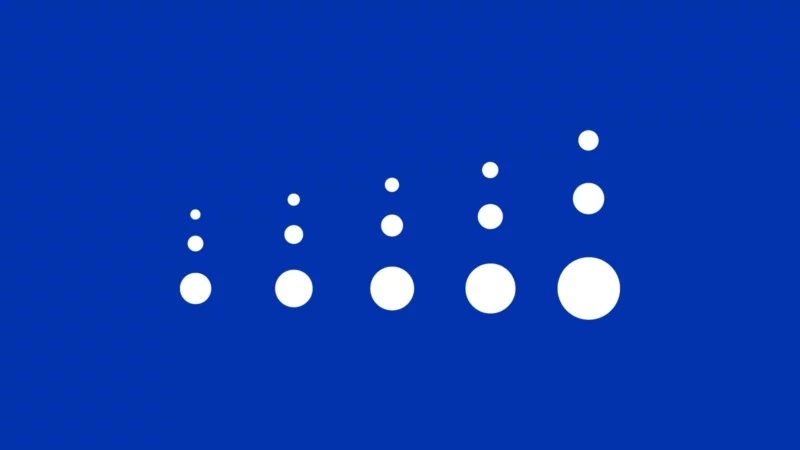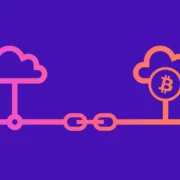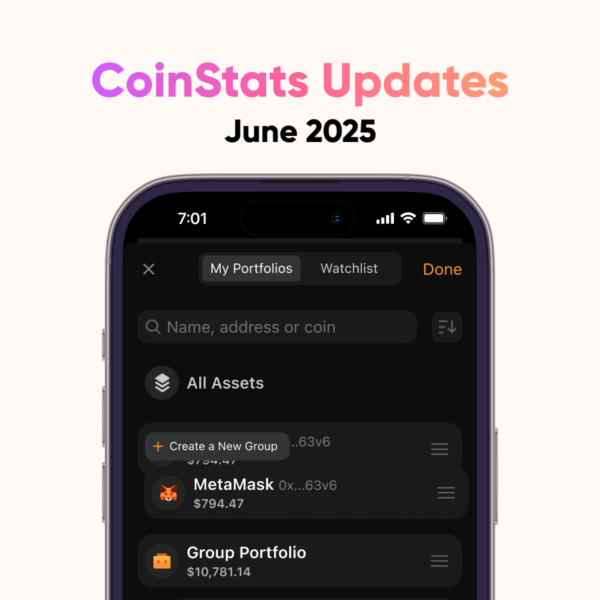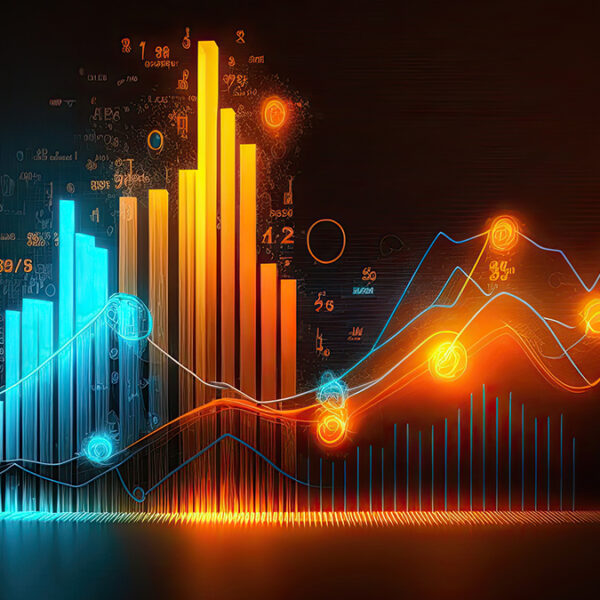
Cardano (ADA) is a decentralized Proof-of-Stake blockchain aiming to become the “Internet of Blockchains” by facilitating seamless interoperability between different blockchain networks.
Referred to as an “Ethereum killer,” Cardano (ADA) was launched as a more sustainable and scalable blockchain than Bitcoin and Ethereum.
ADA is the token that powers the Cardano network and has become one of the fastest-growing blockchain assets in the cryptocurrency market. ADA was named after Augusta Ada King, Countess of Lovelace (1815-1852), the first computer programmer.
Cardano (ADA) experienced a significant drop in early June, triggered by the U.S. Securities and Exchange Commission (SEC), categorizing it as security during its legal actions against Binance and Coinbase.
However, ADA’s price has been witnessing a consistent 1.5% price growth over the past month, indicating the potential for a substantial surge in the near future. With its steady growth and recent consolidation, ADA has rekindled excitement among investors and enthusiasts alike.
This guide takes a closer look at Cardano (ADA) and its underlying technology, along with the ADA token’s price prediction based on experts’ opinions and the expectations for a breakthrough in ADA’s value.
Read on to decide if ADA coins should be a valuable addition to your investment portfolio and make an informed investment decision that could shape your financial future!
Key Takeaways
- Cardano (ADA) is a decentralized Proof-of-Stake blockchain launched as a more sustainable and scalable blockchain than Bitcoin and Ethereum
- Cardano aims to become the “Internet of Blockchains” by facilitating seamless interoperability between different blockchain networks.
- ADA is the token that powers the Cardano network and has become one of the fastest-growing blockchain assets in the cryptocurrency market.
- ADA’s price has been witnessing a consistent price growth over the past month, indicating the potential for a substantial surge in the near future.
- While the recent price decline has raised concerns, Cardano price predictions remain largely positive, with a potential for a trend reversal in 2023, leading to significant growth in market capitalization and price.
What Is Cardano (ADA)?
Charles Hoskinson founded Cardano as a more scalable, interoperable, and sustainable blockchain than Bitcoin and Ethereum. IOHK, a blockchain R&D company founded by Charles Hoskinson and Jeremy Wood; the Cardano Foundation; and Emurgo, a venture capital firm based in Japan, are behind Cardano’s development.
Powered by ADA token, Cardano is an open-source blockchain enabling users to build smart contracts, create decentralized systems and applications, and send and receive funds instantly with minimal fees.
What makes Cardano unique is that its development is based on scholarly academic research and peer-reviewed scientific evidence.
Cardano uses the Ouroboros protocol to ensure the Cardano blockchain’s sustainable scalability without compromising security or energy efficiency. Its Proof-of-Stake algorithm makes it one of the most environmentally friendly blockchain systems in the market.
Also read: How to Buy Cardano | Where, How, and Why
How Does Cardano (ADA) Work?
Cardano (ADA) was designed to address such limitations of existing blockchain networks as scalability, sustainability, and interoperability.
Cardano’s Ouroboros protocol is a Proof-of-Stake (PoS) consensus algorithm ensuring high transaction speed, advanced features, and a scalable consensus mechanism. Cardano prioritizes sustainability by focusing on environmental friendliness and long-term viability. Its PoS consensus algorithm requires less energy than Proof-of-Work (PoW) algorithms used by networks like Bitcoin.
Cardano is a multi-layer blockchain with two layers developed as a solution to blockchain scalability, privacy, or interoperability issues. It separates the two layers to enhance security, ease updates, and facilitate compatibility with different programming languages.
- Cardano Settlement Layer (CSL) contains the ledger of validated transactions, accounts, and balances. It handles all transactions with minimal transaction fees using ADA.
- Cardano Computing Layer (CCL) executes the smart contracts, facilitates the development of DApps, and ensures security.
Cardano uses staking, a process where network participants stake crypto to participate in the blockchain’s operation. Users owning a 2% stake in the Cardano blockchain can choose to mine a block.
The decentralized governance mechanism incorporated by Cardano allows stakeholders to participate in the decision-making process. ADA holders can make proposals and vote on protocol upgrades and improvements.
Cardano (ADA) Milestones
Cardano (ADA) has achieved several significant milestones since its inception. Here are some notable milestones in the development and evolution of Cardano, named after influential historical figures:
- Byron Phase: This phase marked the launch of the Cardano mainnet in September 2017, introducing the blockchain and the cryptocurrency ADA to the market.
- Shelley Phase: The Shelley phase, in July 2020, introduced the decentralization of the network by enabling staking and delegation of ADA, allowing users to participate in the PoS consensus and earn rewards.
- Goguen Phase: The Goguen phase represents the integration of smart contract functionality into the Cardano blockchain. It allows developers to build and deploy decentralized applications (DApps) and execute smart contracts using Cardano’s native programming language, Plutus.
- Basho Phase: The Basho phase aims to enhance Cardano’s scalability and interoperability. It focuses on improving the network’s performance and throughput, enabling sidechains and off-chain scalability solutions.
- Voltaire Phase: The Voltaire phase is centered around the governance and sustainability of Cardano. It introduces a decentralized governance model, allowing ADA holders to participate in decision-making processes and propose and vote on protocol upgrades. The Voltaire phase aims to ensure the long-term evolution and self-sustainability of the Cardano ecosystem.
In March 2021, with the Mary hard fork, Cardano added native token support, allowing users to create custom tokens directly on the network.
In September 2021, the Alonzo hard fork introduced smart contract capabilities with Plutus, its own smart contract platform. The upgrade allowed developers to build DApps and NFTs and deploy smart contract applications onto the Cardano blockchain.
In September 2022, The Vasil hard fork increased Cardano’s scalability, speed, and DApp development capacity.
In May 2023, Cardano released the new Hydra protocol, functioning as a Layer 2 protocol. Hydra’s ability to scale horizontally enables handling a growing number of transactions and enhances the platform’s transaction throughput and efficiency while maintaining security and decentralization.
Also read: How to Stake Cardano (ADA)
Cardano Price History
Cardano (ADA) has experienced a notable price history since its launch in 2017. Cardano’s lowest price was recorded on Oct 1, 2017, when it was trading at its all-time low of $ 0.017354. Shortly after listing, ADA was listed on several cryptocurrency exchanges, reaching around $1.33 in January 2018 during the peak of the cryptocurrency market bull run.
Following the market-wide correction in early 2018, ADA, like many other cryptocurrencies, experienced a significant price decline. The market entered a consolidation phase, and ADA’s price fluctuated between lower levels throughout 2018 and early 2019.
Cardano’s price started to regain momentum in 2020-2021, during the Bull Market when it was trading at its all-time high of $ 3.10 on Sep. 2, 2021. The announcement and subsequent launch of the Shelley phase, which brought about decentralization through staking, generated positive sentiment and increased interest in ADA. Cardano’s price experienced significant growth during this period, reaching new highs.
However, shortly after this peak, the overall cryptocurrency market experienced a significant correction triggered by various factors, such as regulatory concerns and market speculation. ADA’s price also dipped during this period, reflecting the broader market trend, and ended 2022 at two-year lows of $0.24.
Cardano’s Future Amidst SEC Lawsuit
Since the beginning of 2023, Cardano (ADA) had climbed by over 54%, with Cardano’s total value locked surpassing $170 million, a rise of almost 300% since January 1.
However, ADA suffered a sharp decline in value in the beginning of June when the United States Securities and Exchange Commission (SEC) regarded it as an unregistered security in its lawsuits against Binance and Coinbase. Cardano (ADA) was among the $115 billion worth of coins heavily hit by the SEC’s lawsuit, causing its value to drop over 20% soon after the SEC’s claim.
The lawsuit triggered a 42.5% drop in ADA’s price from $0.37 to a two-year low of $0.21 within a few days.
Aditionally, Cardano faced additional pressure due to delisting on popular trading platforms like Robinhood, eToro, and Revolut.
You can connect Robinhood here.
Despite the turmoil in the crypto market, high-profile analysts have agreed that the SEC’s labeling doesn’t automatically render Cardano a security, instead, the SEC would have to substantiate its claims through a lengthy legal process.
IOG, the company behind Cardano’s development, has rebuffed the SEC’s accusations, and Hoskinson remains optimistic about Cardano’s future and the crypto industry at large.
If Cardano successfully challenges the delisting decision, it could set a precedent for similar regulatory hurdles concerning other cryptocurrencies.
While negative sentiment and recent challenges such as the SEC lawsuit and delistings from U.S.-based trading apps have negatively impacted the cryptocurrency, Cardano (ADA) is showing resilience and signs of progress. The crypto analytics platform Santiment notes that ADA has been flashing bullish signals, and mild trader capitulation can ignite bounces for ADA:
“Top cap crypto assets are being traded at a loss after the high profit-taking last week, leading to the price drop we’ve seen. XRP and ADA are seeing a particularly high amount of sells at lower prices, making the chances of bounces increase.”
The token’s technical and on-chain analysis also reveal encouraging indicators for ADA’s positive recovery in the future if the network’s technical aspects continue to develop and are supported by on-chain growth.
Cardano (ADA) Price Predictions
Cardano (ADA) has been generating significant buzz as it approaches a crucial resistance level at $0.2942. The anticipation is palpable, as market participants eagerly analyze every move, hoping to predict ADA’s next trajectory.
Will the price overcome the resistance and launch into a bullish rally, or will it succumb to the pressure, resulting in a temporary retreat?
The ADA price is mainly affected by the trader’s sentiments and whales in the short term. If buyers show an interest in the token, the price will be greatly affected positively.
In the long term, the ADA price is mainly affected by technological advancements and fundamental analysis.
Cryptonews Cardano price prediction 2023 expects the token to trade at a maximum of $0.88, and a minimum of $0.36. Based on its Cardano prediction 2025, the token will trade in a range of $0.99 to $1.43, where the former is the potential lowest price, and the latter is the potential highest price for the entire year. By 2030, Cryptonews predicts the ADA price to have reached the maximum price of $4.94, while the minimum price may be around $3.43.
Changelly predicts the minimum value of Cardano to be around $0.5199, the maximum expected ADA price to be around $0.6099, and on average, the trading price might be $0.5399 in 2023. It expects ADA to have a minimum price of $0.67 and a maximum price of $0.85 in 2025. In 2030, ADA is expected to have a maximum value of $5.12 and a minimum value of $4.39.
Wallet Investor has a bearish outlook and considers Cardano (ADA) a high-risk asset, predicting a significant decline in its value over the next year, potentially leading to a devaluation to 0.0172 USD.
Digital Coin Price expects the ADA price to reach a minimum level of $0.26, and a maximum of $0.62 in 2023. As per their forecast data analysis, the price of ADA will reach a minimum of $0.84., and a maximum of $0.89 in 2025. By 2030, Cardano is expected to reach a minimum of $2.81, and a maximum level of $2.86.
Final Words
In conclusion, the future price of Cardano (ADA) will be influenced by a combination of market dynamics, technological advancements, and competition within the sector. While the recent price decline has raised concerns, Cardano price predictions remain largely positive. Looking ahead, there is a potential for a trend reversal in 2023, leading to significant growth in market capitalization and price.
It’s crucial to acknowledge the inherent volatility of cryptocurrency markets when considering ADA coin price predictions. The unpredictable nature of these markets makes it challenging to accurately forecast short or long-term price movements. Analysts and algorithm-based forecasters can make incorrect predictions due to the complex and rapidly changing nature of the crypto market.






